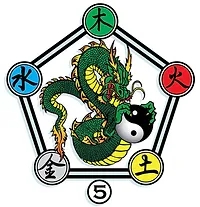Xianwu Wushu, translated as “Immortal Martial Arts,” stands as a testament to the Taoist tradition. Xianwu Wushu transcends the mere physicality of combat, offering practitioners a path to inner transformation and mastery.

Members of the Order
- Millions of Teachers and Sage Monks
Ideology
Preceded by
Succeeded by
- wudang academy
- wudang taichi
- wudang Shaolin
- and more…
Origins and Philosophy
The origins of Xianwu Wushu are in the 9th century, in that period after the Great Anti-Buddhist Persecution, The Celestial Masters faced challenges and internal strife leading to the emergence of new orders. The Xianwu Wushu was one of them.
The founder of Xianwu Wushu was inspired by encounters with immortals, who imparted to him the secrets of martial arts as a means to cultivate both body and spirit.
Central to the philosophy of Xianwu Wushu is the belief in the interconnectedness of all things and the pursuit of harmony with the natural world. Drawing inspiration from the principles of Taoism, practitioners are guided to flow with the rhythms of nature, to embody the fluidity of water and the resilience of the mountains.
Training and Techniques
Training in Xianwu Wushu encompasses a holistic approach to martial arts, encompassing physical conditioning, combat techniques, and magical cultivation. Emphasis is placed on mastering various forms of combat, internal energy cultivation, meditation, and the cultivation of virtue.
Practitioners of Xianwu Wushu are trained to harness their internal energy, or “Qi,” to enhance their physical abilities and achieve a state of heightened awareness. Through rigorous practice of forms, stances, and combat drills, disciples hone their skills in unarmed combat, weaponry, and defensive techniques.
History
Throughout history, Xianwu Wushu has left an indelible mark on the landscape of Chinese martial arts. Its practitioners were revered for their mastery of both the physical and spiritual dimensions of combat, earning them the title of “warrior-sages” in Chinese society.
The influence of Xianwu Wushu extends beyond the realm of martial arts, permeating into the realms of literature, philosophy, and art. Its principles of balance, harmony, and self-cultivation continue to inspire seekers of enlightenment and warriors alike, transcending the boundaries of time and culture.
Shaolin System
The Shaolin Monastery in Henan, established during the Tang Empire, gaining fame for its proficiency with weapons. During the Ming-Qing transition, a pivotal shift occurred as the monks started specializing and teaching unarmed combat, paving the way for the renowned Shaolin martial arts.
The reputation of Shaolin martial arts soared, and its name became synonymous with martial prowess. The influence of the Shaolin Monasteries expanded beyond its walls, and the “Shaolin” label became attached to Buddhist temples known for their martial arts. Each temple’s martial arts, distinct in style and technique, became emblematic of its geographical origin.
The Northern Shaolin style, originating with a Shaolin monk named Zhao Yuan, found its way to the celebrated 18th-century master Gan Fengchi of Jiangsu Province.
Ye Wen changed northern style into Wing Chun, in 1949, he relocated to Hong Kong, continuing to teach Wing Chun and attracting diverse students. His reputation grew, emphasizing not just martial skills but also the philosophy of Wing Chun, including adaptability and moral principles.
By the 1960s, Ye Wen was becoming more famous in the Hong Kong community. In 1967, he established the Ving Tsun (Wing Chun) also pronounced as “Wing Chun” Athletic Association (詠春體育會). Influencing a generation of martial artists. like the famous Bruce Lee, who later achieved global recognition.
Way of the Fist
The Five-Element Fusion Fist, a signature move of Xianwu Wushu known as “the Way of the Fist”, is a martial arts attack with balance among the five elements (Wood, Fire, Earth, Metal, and Water).
To master this formidable technique, practitioners dedicate at least 50 years of training. The arduous journey involves delving into the essence of each element, break every bone on their hands millions of times, understanding their interconnectedness, and achieving martial harmony.
Each finger, representing a specific element. The Wood finger channels vitality, Fire embodies passion, Earth symbolizes stability, Metal encapsulates strength, and Water signifies adaptability. The meticulous coordination of these elemental forces is crucial for the technique’s success.
When executed flawlessly, the way of the fist releases a cataclysmic burst of energy. The destructive power extends over a vast area, transforming everything in its path to dust.
Xianwu Chuan
The Way of the Fist needs training of 50 years, however one man known as Xianwu Chuan managed to master it in 20 years. His journey from novice to grandmaster remains a testament to dedication, innate talent, and connection to the martial arts.
Chuan’s techniques were characterized by unparalleled speed, precision, and a mastery. Chuan created The Swift Fist, as it came to be known, a attack with less power and easier to achive.
Chuan died in 9 of June 1982, his students created many academies in China and Japan,however none of them managed to master the Swift Fist.
- wudang academy
- wudang taichi
- wudang Shaolin
- and more…
Discover more from Multipolar World
Subscribe to get the latest posts to your email.

